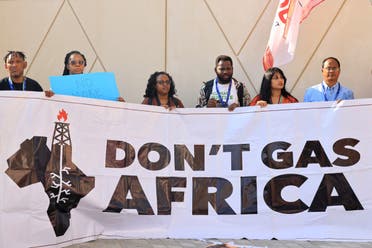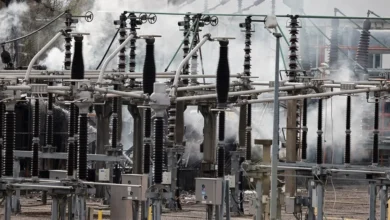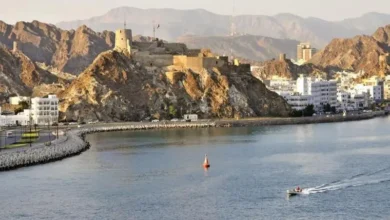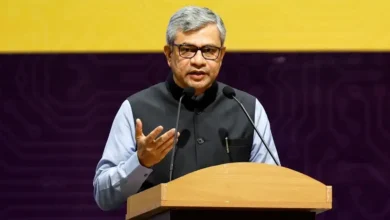Amid building world’s biggest oil pipeline, Uganda announces energy transition plan

As activists across COP28 on Tuesday raised the pitch on Africa’s development of oil-and-gas resources, the landlocked East African nation of Uganda, which is developing what will be the world’s longest heated crude oil pipeline, announced its Energy Transition Plan, even as it reiterated that pumping oil was integral to its energy future.
At a forum on Sunday, just a few meters away from the protesters’ chants of “don’t come to Africa,” aimed at dispelling the mega-corporations who are coming into the energy-rich nations of the continent to pump out oil, Ugandan ministers laid out decarbonization plans across the board.
However, they said they believed the oil-and-gas sector could still coexist with its plans for renewable energy, and together could address the domestic and regional energy needs for its growing population, create tens of thousands of jobs and fund a switch to a mixed energy future, with more reliance on renewables.

The multi-billion-dollar East Africa Crude Oil Pipeline (EACOP) – a collaboration between TotalEnergies EP Uganda (TotalEnergies), China National Offshore Oil Corporation Uganda Limited (CNOOC) and the Uganda National Oil Company (Unoc) – is the keystone of further developing Uganda’s booming oil-and-gas sector that is scheduled to pump its first crude oil in 2025.
But the pipeline, which has the potential to pump 240,000 barrels of oil a day, has drawn global criticism at a time when the world is shifting to a non-oil-reliant, decarbonized realm and a concerted call to action to phase out fossil fuels.
Despite this, the Permanent Secretary for the Ministry for Energy and Mineral Development, Uganda, Irene Bateebe, said the country had ambitious plans to decarbonize and, by 2065, become Net Zero while, at the same time, making sure none of its people “are left behind.”
The forum heard how Uganda has set an ambitious Energy Transition Plan, endorsed and co-designed by the International Energy Agency, to develop its substantial energy and mineral resources, promote economic development, end energy poverty, and lead the country to a “just energy transition.”
One of the world’s least developed countries, Uganda’s stated objective in Vision 2040 is to transform into “a modern and prosperous country,” ensuring a better future for its citizens. The energy sector is expected to play an important role in helping Uganda achieve this.
Uganda is endowed with abundant natural resources, including fertile soils, petroleum deposits, and reserves of iron ore, phosphates, copper, cobalt, aluminum, and gold. The agricultural sector employs more than 80 percent of the country’s workforce, mostly in subsistence farming.
Uganda had a population of 47 million in 2022, around 25 percent of which was urban. The country’s fast population growth has undermined efforts to increase access to modern energy.
Its ambitious Energy Transition Plan aims to wean the 94 percent of the 45 million-strong population currently burning biomass (firewood and charcoal) for domestic use onto cheaper, cleaner electricity generated renewably without carbon emissions.
The plan protects the carbon sink forests of the East African nation and dramatically reduces the country’s current carbon emissions, which are driven largely by biomass consumption. If the current high demand for biomass continues unchecked, it is estimated that Uganda’s entire national stock of forest and tree cover will disappear within 20 years.
While Uganda is already a leader in renewables, generating roughly 95 percent of its electricity from hydro and solar power, its current capacity is about 2GW, with only a limited distribution network focused mainly around the capital, Kampala.
The Energy Transition Plan has a twin strategy at its heart to drive both supply and demand: Increasing renewable generation supply to 52GW by 2040 and stimulating demand through a combination of improved distribution capacity and smart technology that will qualify an appliance like a domestic cooker for an e-tariff that makes it much cheaper to use than biomass.
While such a plan will be unaffordable for most developing countries, Uganda plans to fund the Energy Transition Plan in part through revenues from its oil-and-gas reserves.
It will, said the ministers, help the country achieve its ambitious energy goals.
Universal access to clean, reliable energy sources
Achieving universal access to clean and reliable energy sources for electricity and cooking remains a challenge in the country and is a high priority for the government in achieving economic and social development. With around 30 percent of the population having access to electricity and less than 6 percent having access to clean cooking fuels, Uganda continues to have one of the lowest electrification and clean cooking rates in sub-Saharan Africa.
Although the share of people with access to clean cooking fuels has rapidly increased since 2010, the rapid population growth has led to an increase in the number of people without access to clean energy sources.
In its National Energy Policy 2023, the Ugandan government aims to ensure universal access to electricity, modernize and diversify Uganda’s energy mix, promote efficient sector-wide use of energy, and secure affordable energy supply while offering access to clean cooking solutions to 50 percent of the population by 2040.
“As a country, we continue to increase our energy access from current levels to achieve universal access,” said Bateebe, adding that Uganda is positioning itself as an energy hub in Africa, with the growing industry set to provide some 220,000 jobs by the end of the decade. “A clear roadmap is needed for a sustainable future,” Bateebe added.
The aim is for electricity to become the fastest-growing fuel in the country by 2040 and reach Net Zero in the energy sector by 2065.
However, the ministers said finance and investment were integral to this shift to renewable energy sources.
Vast profits from the oil pipeline will, in part, go toward achieving that end.










